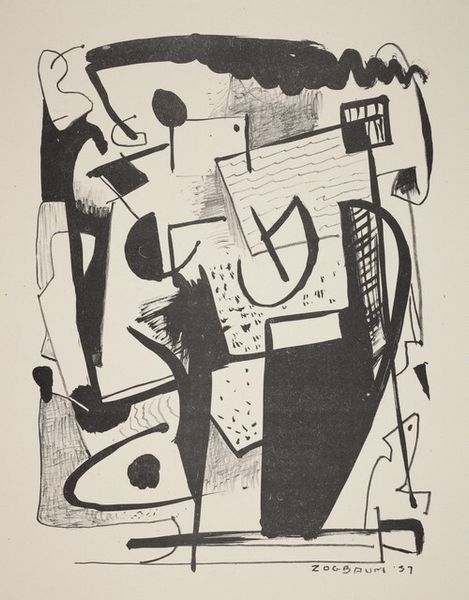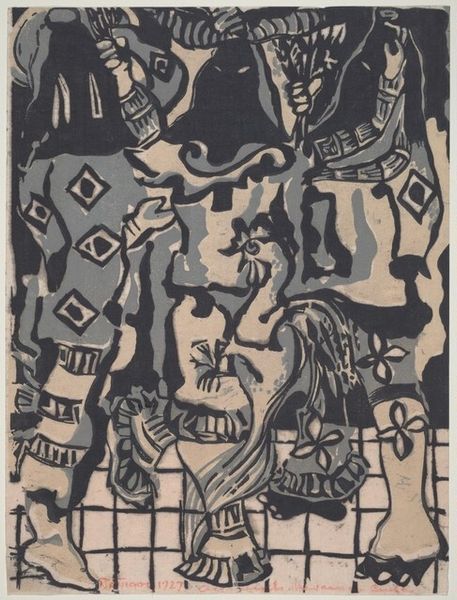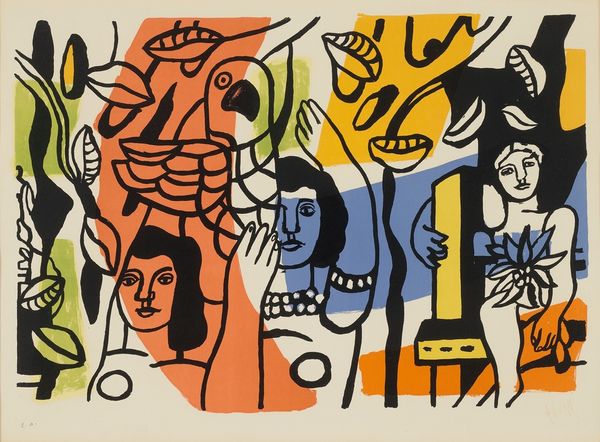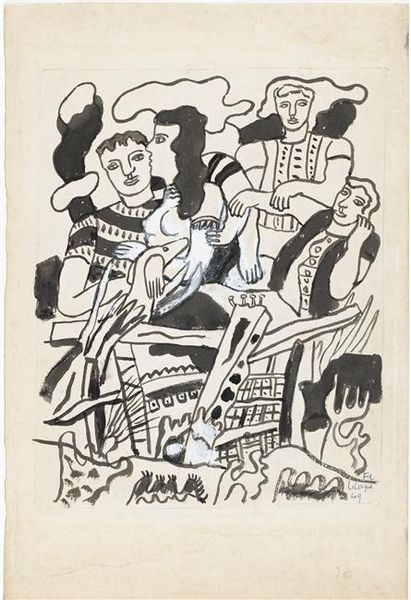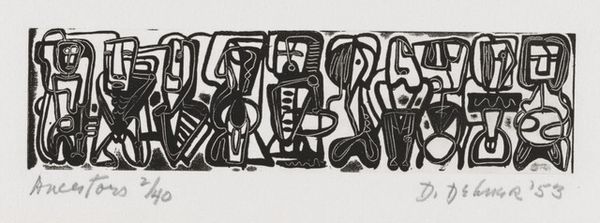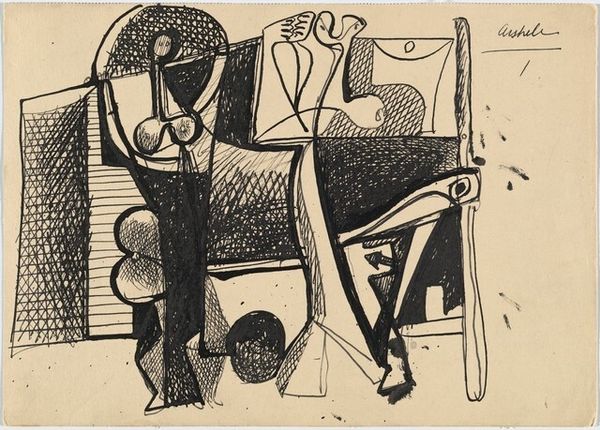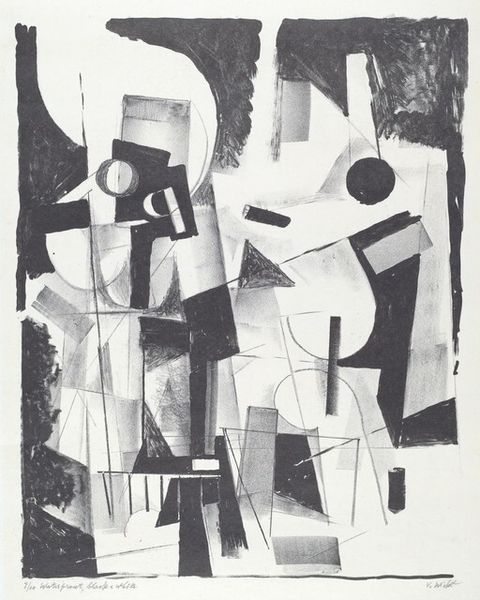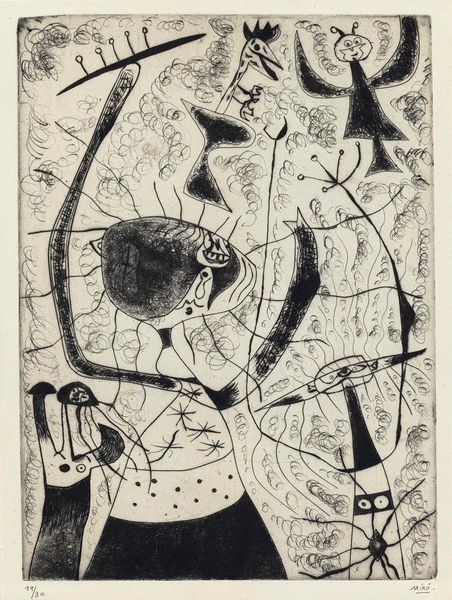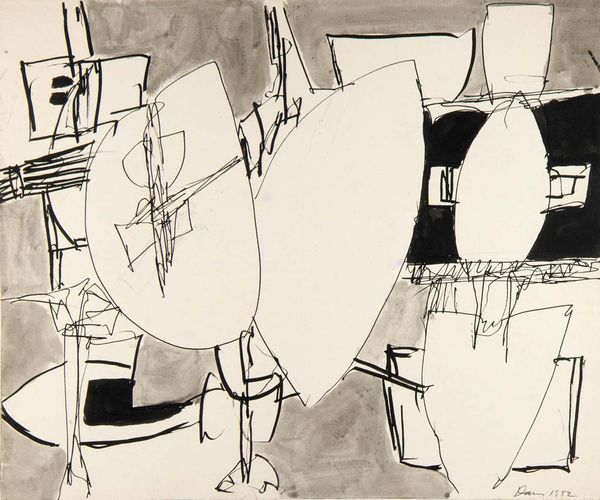
drawing, ink
#
drawing
#
cubism
#
figuration
#
ink
#
cityscape
#
modernism
Dimensions: 23.2 x 31.2 cm
Copyright: Fernand Leger,Fair Use
Curator: Fernand Léger's ink drawing, “Trouville,” from 1949, presents a striking composition. What captures your attention initially? Editor: Its starkness. The contrast between the black ink and the bare paper creates an almost immediate visual drama. There’s an energetic dynamism, but something also feels unresolved, fragmentary. Curator: That fragmentation is key to Léger’s post-Cubist vocabulary. Note how the artist presents flattened, simplified forms to suggest a seaside town; the title, "Trouville," affirms the coastal setting. Léger moves beyond mimetic representation, toward a system of graphic signs. We might decode his figures through Saussurean frameworks, for instance. Editor: Right, Léger simplifies and distills the essence of this place into archetypal forms. But it’s also telling that this comes after the war. Trouville as a fashionable resort became accessible to the working class, transforming its social landscape. Was Léger grappling with these changes through a graphic idiom? Curator: Perhaps. He consistently depicted working-class figures in dialogue with modern industry. One can easily imagine Léger embracing art's role as a public service, portraying people, buildings, and objects in ways that resonate with the broadest possible audience. It recalls some tenets of Socialist Realism, yet firmly rooted in the formal language of modernism. Editor: The flatness amplifies this accessible quality. Think about those large swathes of unmodulated ink. This treatment minimizes detail, instead underscoring form and function. Curator: Precisely. Every element, from the stylized figures to the simplified architectural motifs, is reduced to its essence. This isn’t merely a portrayal of Trouville. It's Léger’s interrogation of seeing, of structuring reality itself. Editor: I think ultimately it speaks to the artist’s continued investment in art for the masses, and this piece serves as a powerful reminder of art's connection to societal evolution. Curator: Indeed, whether viewed through a formal lens or examined within a social and historical framework, "Trouville" reflects the power of art to express, analyze, and ultimately reshape our understanding of the world.
Comments
No comments
Be the first to comment and join the conversation on the ultimate creative platform.
